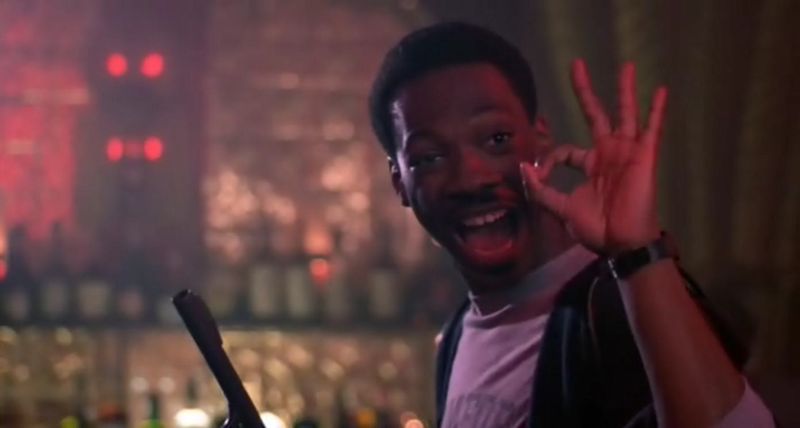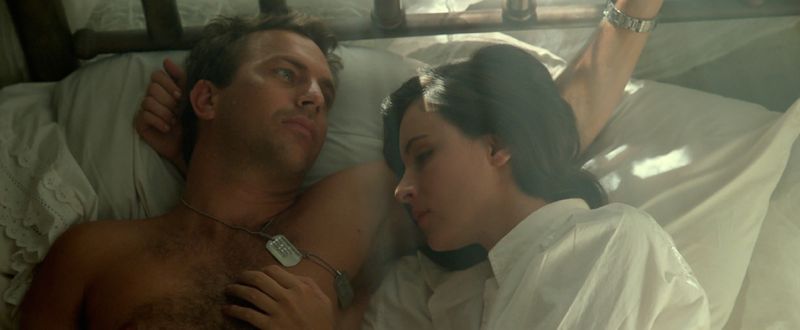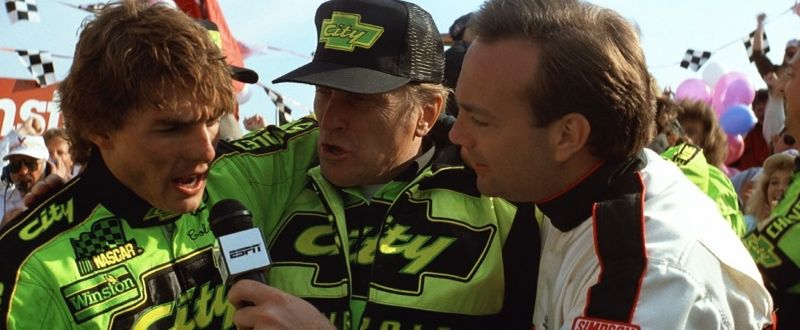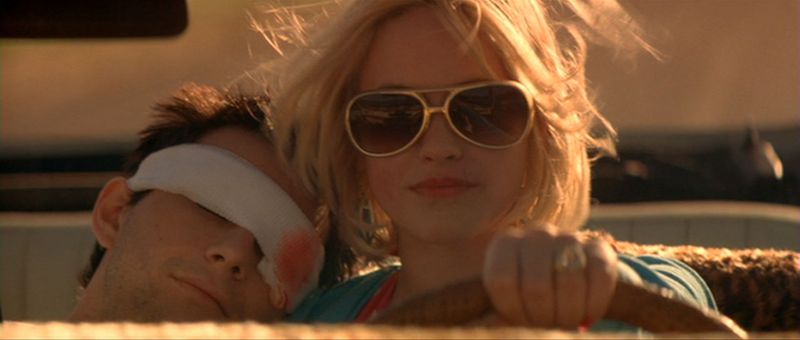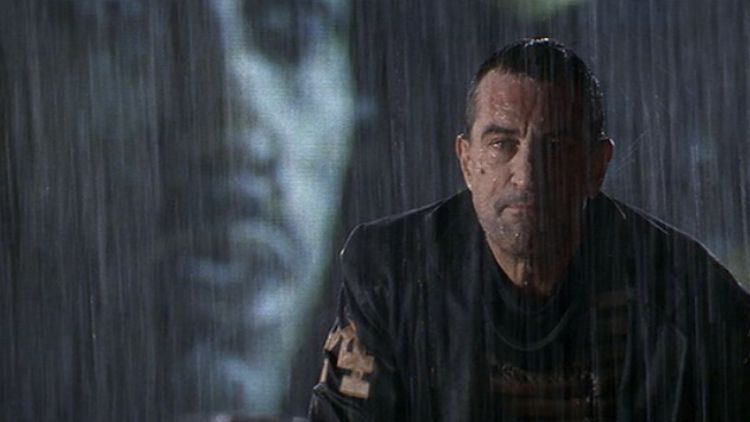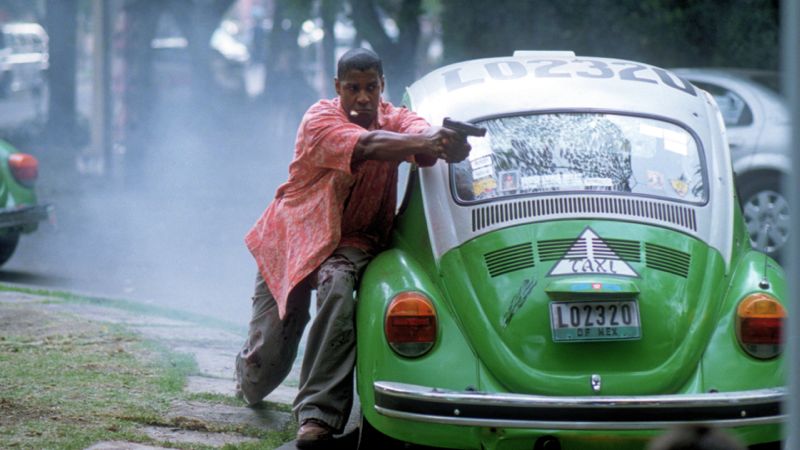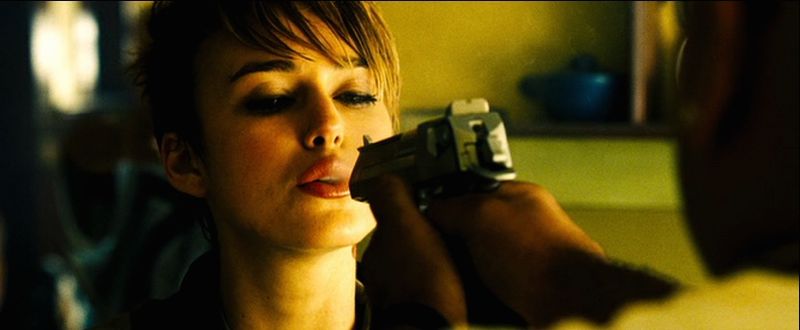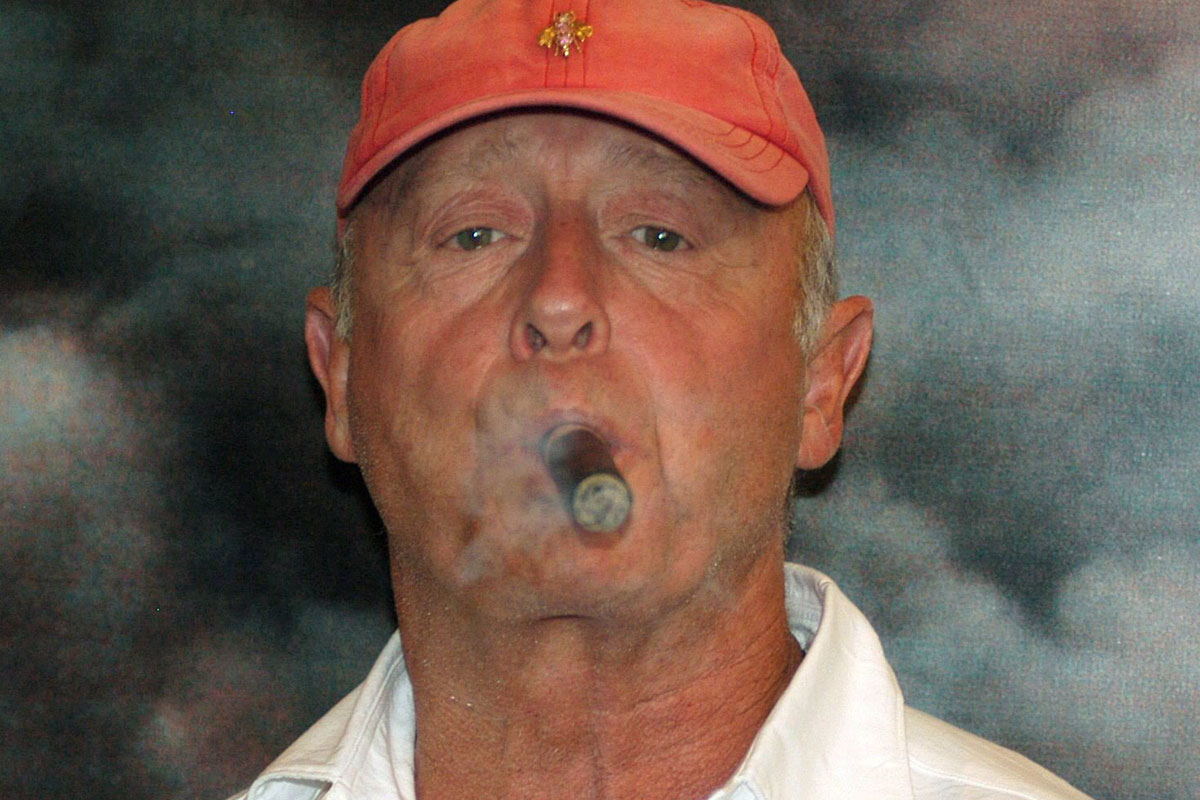Peter Martin, Jaime Grijalba Gomez, Patryk Czekaj, Christopher O'Keeffe, Ernesto Zelaya Miñano, Ard Vijn, Niels Matthijs, Jim Tudor, Eric Ortiz Garcia and James Dennis
contributed to this story.













The Hunger (1983)
James Marsh - Asian Editor
A complex love story involving vampires and doctors, The Hunger revolves around Catherine Deneuve's character Miriam, a beautiful, seductive vampire who has survived for thousands of years. Promising her lovers eternal youth, she has turned a string of humans over the centuries, but as her current partner, John (David Bowie) discovers, he has been lied to, and rapidly begins to age.
Meanwhile, Susan Sarandon plays a research scientist into ageing and immortality, who is pulled into John and Miriam's dangerous relationship, and the results are bloody, sensual yet tinged with a desperate sadness. Immortality it seems is not all it's cracked up to be.
The Hunger reveals a number of Scott's visual idiosyncrasies to be already in place: smokey interiors, billowing drapes, random shafts of light, bizarre camera angles and rapid editing - and feels very much a product of its early 80s setting, or perhaps something of a trendsetter. Vampirism here is analogous of drug addiction, as well as STDs and the end of the sexual revolution, but Scott ensures the burgeoning romance between Deneuve and Sarandon is milked (or should that be bled) for as much softcore titillation as possible.
The Hunger plays at a considerably slower and more deliberate pace than any other film in Scott's oeuvre, and it's a shame he never attempted another horror film, as there is plenty to admire and enjoy in this atmospheric and incredibly stylish piece. Not to mention the fact that everything from Blade to Only Lovers Left Alive owes the film a notable debt for its depiction of glamorous urban bloodsuckers adapting to the modern age.
Top Gun (1986)
Winner of the Academy Award for Best Original Song, Winner of the Golden Globe for Best Original Song
Patryk Czekaj - Contributing writer
I couldn't have picked a better moment to watch Top Gun for the first time. Edge of Tomorrow premiered in Poland about two weeks ago, and with the help of that curiously captivating sci-fi blockbuster, Tom Cruise only reaffirmed his position as a devoted and charismatic actor. However, for me personally, it means much more than that – as soon as the picture ended my man crush on Cruise achieved its final stage. Naturally, choosing Top Gun for this month’s List of Shame felt like the only right option.
A true star of his generation, Cruise plays Maverick with enough confidence to make the viewer believe that he’s the real deal, a fearless hero who’s not afraid to take risks in order to protect his beloved country. He’s temperamental and unpredictable, yet always successful. It’s not hard to see why so many women immediately fell in love with Cruise and why so many men wanted to be like him. Often times, if it’s not the fearless acting or the trademark smile, it’s the six pack that steals a scene. But perhaps the most surprising observation is that the man hasn’t aged a bit. Whether in Top Gun or Edge of Tomorrow, Cruise proves himself a driving force behind the intense scenarios.
Nearly 30 years after its release, Tony Scott’s actioner still possesses the ability to amaze and entertain with some exceptionally thrilling airborne sequences. Although the unnecessary sentimentalism, cheesy romance, and Val Kilmer’s horrible performance downgrade the overall experience, it’s nevertheless a well-executed and fast-paced military extravaganza that Hollywood can be proud of. Despite its flaws, the film’s certainly unforgettable, mostly due to the synth-tastic soundtrack packed with many smash hits (‘Highway to the danger zone’!). Top Gun is big and loud, and it perfectly defines not only the American Dream, but also American cinema of the 80s.
Beverly Hills Cop II (1987)
Nominated for the Academy Award For Best Original Song
Niels Matthijs - Contributing writer
Tony Scott was one of the few Hollywood directors I could truly appreciate. Not that he made fantastic films, but he had a definite signature style in an industry that values commercial traps over unique vision. I've seen almost every post-2000 film of Scott's and not a single one disappointed me. Snappy editing, colourful filters and a focus on action over plot characterized his recent films. As an erratic action film fan, his work was right up my alley.
.
I saw most of his pre-2000 films when I was still a kid, back when I was not as fanatical about film as I am now. In order to provide a little update of my cloudy memory, I picked out Beverly Hills Cop II and ventured into old Scott territory.
As a kid I liked the Beverly Hills Cop series, but almost 30 years later not much love remains. Eddie Murphy is more annoying than he is funny, the structure of the film is completely generic and the bad guys are boring as hell. The biggest problem with Scott's sequel is that it is little more than a rehash of the first film. The same musical cues, the same plot lines, even the big action scene of the first film is copied almost entirely. Scott's direction is a tad fresher and faster than Martin Brest's, but watching both films (almost) back-to-back makes for a lot of yawning.
For those who have a soft spot for late 80s/early 90s cop flicks there is still some pleasure to be found, but apart from some barebones melancholy the Beverly Hills Cop series has little to offer. It's a generic cop flick with subpar comedy and mediocre action scenes. Another childhood memory shattered.
Revenge (1990)
James Dennis -Contributing writer
Kevin Costner is a navy pilot; sweaty-faced, in a white T-shirt, wearing aviators, with a golden labrador, on a windswept beach. He also drives a battered jeep. It really doesn't get more period than this. Revenge (1990) typifies a stage in Tony Scott's career, with smoke filled interiors taken to near parodic extremes and rafts of beautiful, but synthetic, filter-enhanced shots. Yet with a surprisingly leisurely pace, it's actually fairly light on action - not only compared to his hyperactively lensed work of the naughties but also to the (more measured) likes of Top Gun (1986) and The Last Boy Scout (1991).
Unfortunately the screenplay lacks the punch of those two, and is choked by some awkward dialogue and a plot that bristles with implausible turns. Of course you wouldn't look to Scott minor for dramatic realism, but there are limits... Cast that aside however and this movie has an appealing vibe going on. Spiritual and sometimes ponderous, punchy dialogue is arguably not what it's about. Anthony Quinn shines as the conflicted Tibey, and Costner reminded me why he was once such a commanding screen presence. Madeline Stowe fares less well, hampered by a dodgy accent and naivety that verges on plain stupidity. It's not without pathos and the landscape cinematography is, of its type, exemplary.
I found Revenge both mesmerising and frustrating, both exactly what I expected and brimming with surprises. A moody, tragic melodrama, it's a fascinating if not entirely successful entry into Scott's filmography. I watched the theatrical version running around 2 hours, but I gather there's a director's cut available in the US that loses 20 minutes to make for a snappier experience.
Revenge (1990)
Jim Tudor - Contributing writer
Tony Scott's movies have almost always left me cold. The biggest exception being 1993's True Romance - a crackling success I've always credited in part to its screenwriter Quentin Tarantino. Tarantino himself, however, has always been partial to another violent Tony Scott yarn, 1990's Revenge. Although Revenge presents itself as an edgy, R-rated Kevin Costner vehicle, the strengths of its surrounding elements - the unrelenting sunbaked Mexican terrain, the gauzy smoky interiors, and most importantly, straightforwardness of the storytelling - make it no surprise that it found a fan with the man who went on to make Pulp Fiction and Kill Bill. Scott nails both the 1990-era brutal violence and the front-loaded sexiness of the illicit affair that triggers the trouble.
Costner starts the film flying an F-15. He's the coolest hot dog in his squadron, rendering Revenge a twisted Top Gun 2. But then he retires from the Air Force, and goes to visit his old pal Anthony Quinn, a wealthy criminal "businessman". He immediately falls hard for Quinn's young wife - or at least her rear end in horse-riding pants. She reciprocates, and it gets hot. But things cool pretty quickly once Quinn finds out, and decides it's time to make good on the movie's title. In any case, once this maverick's been goosed, he's in a danger zone of Kenny Loggins' worst nightmare.
The story may be an overly familiar one, but with the sound off, it would play as the silent movie that Peckinpah never made. It's Scott's still-developing touch, however, that makes the unnecessary indulgence that is Revenge work, then and now. Despite its shortcomings, the material found the right director. Or, as fanboy Tarantino once quoted in his own such film, Revenge is a dish best served cold.
Days of Thunder (1990)
Nominated for the Academy Award for Best Sound
Ernesto Zelaya Minano - Contributing writer
I don’t drive. I don’t know the first thing about cars and have never really been interested; “the color’s nice” is pretty much as far as my knowledge goes. And yet, here I am watching and enjoying a movie about stock car racing.
Back in fourth grade, all my classmates loved this movie; they thought of it as the ultimate “Guy Movie”, doing for race cars what Top Gun did for jet planes. And they’re both similar in some ways: there’s the hotshot guy who learns to better himself, the career-minded, serious woman who falls for his charm, and the blonde and blue-eyed douchebag antagonist who you instantly want to bitch slap when he shows up.
Tony Scott had yet to reach his Hyper ADD Phase (it reached its apex in Domino, the only movie I’ve seen where the camera doesn’t stop moving for two whole hours), but his style is instantly recognizable, slick and stylish; who knew watching guys drive around in a circle would be so exciting? Even the car building montage is cool.
In fact, the entire movie just screams “Cool!” And nothing is cooler than Tom Cruise; even this early in his career, you can tell the guy is a true Movie Star. It’s that charisma that carries this movie along, since there isn’t much to Cole Trickle as a protagonist. And yes, he does get to run at one point.
Days of Thunder is a true product of the 90s; everything on screen somehow took me back to my school days, and I wouldn’t be surprised if half the soundtrack was composed by Kenny Loggins. It’s corny as hell in spots (Robert Duvall speaking lovingly to a car is a prime example), but it’s also pretty respectable entertainment.
I can definitely see why my classmates loved it, and why they all wanted to be like Tom Cruise when they grew up. I wonder how many people rushed out to get their driver’s license after seeing this? (Just like Top Gun probably had a lot of guys wanting to join the Air Force). As for me, I have yet to get behind the wheel of a car. Watching races in movies is as far as I go.
The Last Boy Scout (1991)
Christopher O'Keeffe - Contributing writer
The Last Boy Scout came out in 1991 but everything from its gaudy title fonts and cheesy opening power rock to the balls-out swagger it carries throughout screams 80s, and the film's all the better for it.
Opening on a rain-battered football stadium, coaches scream and men fling themselves into the mud before star player Billy Cole puts a gun to his temple, deadpans “Ain’t life a bitch” and blows his brains out. It certainly is for everyone in this movie. Bruce Willis’ private investigator Joe Hallenback is put on the case, teaming up with Damon Wayans’ disgraced quarterback Jimmy Dix after the murder of his girlfriend (Halle Berry).
Underneath its cocky swagger there are some serious film noir influences at play here. During the day the L.A. skyline bleeds in oranges and reds while neon strip lights illuminate the night. Settings are comprised of strip joints, mansions and backwoods and every character is crooked: the cops are fat scumbags, the politicians are on the take, wives and girlfriends are cheats and strippers and the heroes are foul-mouthed junkies and boozehounds, Dix is disgraced by drug use and Hallenback is a bad-tempered alcoholic. Even the kids aren’t innocent; Hallenback’s daughter has learned a fine line in cursing from the father she openly despises.
Damon Wayans is great in his turn as Dix, a flawed mix of arrogance and charm but it’s Willis, in full Die Hard mode that Shane Black’s script gives all the best lines to, quipping his way into and out of trouble with the entertaining dialogue that has become Black’s trademark. The story becomes increasingly ludicrous as the action gets ramped up to its overblown stadium set finale, but it’s the central relationship between the stars that makes the film a joy to watch. His daughter is annoying and feels shoehorned into the script to provide a bit of impetus but the annoying backwards-cap wearing punk kid feels like an action movie staple of the time.
The Last Boy Scout is hugely entertaining and a great nostalgia trip back to the kind of sweary, swaggering adult action films that now seem so long ago.
True Romance (1993)
Jaime Grijalba - Contributing writer
How could I possibly translate the experience of seeing this movie for the first time? It's like seeing a long lost letter from your uncle or one of your parents, one that was written long before you were born, and you start to notice the eagerness, the freshness, the way that they try to articulate the obsessions they had in their early ages, and you can compare that to what you know about them now.
I know that this is directed by Tony Scott and all, and I'm supposed to talk about him, but while I won't say that this is a Quentin Tarantino film, I could at least say that I felt his presence and I was thrilled by it. After all, Quentin Tarantino is one of my, if not my favorite living filmmaker right now. It's that tension between the articulate drama, the life-like dialogue, the irony, the comedy and the reference to the pop culture of the time or then.
But enough of that, we all know what Tarantino's known for. The ambivalent and playful way in which the plot moves around feels like some kind of pastiche of different genres, and you could feel the shifts in the visuals and colors, between here and there, not only because of a change of scenery, but because there's an ambient, a mood that supports it. It's a structured sequence of stories that follow the same path of a case of missing cocaine, we see the forced dealers, the original owner, those tracking it, the buyers, and the police who want the biggest piece of pie from the whole deal.
We switch between characters and places as if it were nothing, shifting perspectives, living inside the mind of the main character, seeing his hallucinations of Elvis and all of the tribulations he has in his mind, to the thoughts of his wife Alabama. Then on to the office of the police, where they are discussing elements that the main characters know nothing about (but that maybe could end up suspecting).
The violent last 10 minutes are among the warmest homages to Chinese/HK action films that has ever been filmed to-date, not even Tarantino himself could surpass the way that the frame seems filled with action, the choreography, the way that the guns shoot their charges, the way the bodies moved and flew across the screen. It could become an obsession of mine quickly, and the way that they announce by just simply showing the films beforehand is just amazing.
This is a movie that works on many levels, for the movie buffs it's a movie about how they could end up "making it", and then it's a thrilling thriller, and then it's a funny film, and then it's filled with grief (the scene between Alabama and the Gandolfini character is among the most gruesome and harsh that I've seen in a mainstream movie). It's a masterpiece, who can deny it, it's a movie for the ages.
The Fan 1996
Peter Martin - Managing Editor
As I wrote last year in an appraisal of Tony Scott's first five films, "While Top Gun and Days of Thunder poisoned the well for me, discouraging further exploration of his films until much later, Scott ultimately manifested greater control of his projects, often pushing the limits of commercial cinema in order to deliver films that only appear to favor style over substance." After Days, Scott had the opportunity to work with much more original material, and "next made a superbly entertaining trio of films: The Last Boy Scout, True Romance, and Crimson Tide."
The Fan (1996) came next, and is the only remaining feature by Scott that I hadn't seen. Unfortunately, it's almost a complete misfire, in large part because of several ludicrous narrative twists that make it difficult to enjoy, even as a straightforward popcorn picture. Robert De Niro stars as a San Francisco knife salesman who begins at the boiling point, which is a major stumbling block because it will, quite obviously, only take a few degrees of pressure for him to boil over into full-blown psychosis. The character claims to love the game of baseball, and is a die-hard fan of the San Francisco Giants, yet his repellent behavior betrays an intention on the part of the filmmakers to paint all dedicated sports fans with a broad, unflattering brush. (An uncredited Frank Darabont took a swing at the apparently unsalvageable script.)
Scott labors mightily to bring visual interest to the proceedings (in collaboration with cinematographer Dariusz Wolski), leading to an utterly ridiculous night game played in a drenching rainstorm, in a barely-lit stadium that would never pass muster as a Major League Baseball park. Those shafts of life are, evidently, meant to distract from the movie itself, in which De Niro appears to be parodying his own performance as a psycho killer in other, much better movies. It's a long, long way from De Niro's exquisite turn as a baseball player in Bang the Drum Slowly, and represents a low point in Scott's career.
Man On Fire (2004)
Eric Ortiz Garcia - Contributing writer
I haven't seen many Tony Scott films to-date but I chose 2004’s Man on Fire simply because most of it was filmed in my hometown, Mexico City. I remember that it was a big deal in Mexico ten years ago, naturally receiving a whole lot of publicity; it also features two of the most famous Mexican actors (Jesus Ochoa and Carmen Salinas). Watching it for the firs time now, I found it to be both entertaining and very, very silly.
Man on Fire is basically two different movies in one. In the first half, we meet Denzel Washington’s Creasy, the classic tough protagonist with a dark past and a problematic present that eventually will find a reason to keep on fighting. And that reason certainly comes from the most unexpected place, which in this case is Dakota Fanning’s character Pita. The storyline puts Creasy in Mexico City, as the bodyguard of the daughter (Pita) of a rich Mexican American family. Fanning was just a little 10-year-old girl at the time, and the heart of Man on Fire is in the interaction between her and Washington.
As Scott notes on the DVD commentary track, different sides of Mexico City are presented in the film. In downtown, Washington’s character really feels the stressful environment of the city; while in the family's nice neighborhood, he has all the commodities. Man on Fire is an extremely stylish piece, jump cuts included, and this visual aspect ends being more important than anything else. Sure, we also go to the slums of Greater Mexico City, and there’s a full kidnapping story with corrupt cops involved, but Man on Fire is nonetheless an stylish daydream.
The first half features a sweet father-daughter bond (yes, Creasy is closer to being a real father for Pita than her actual dad), while the last part is a straight revenge tale. The plot appears to be tricky, with minor characters involved (i.e. a Mexican journalist), but in reality, all is damn useless. This is really about Washington’s “I’m tough and cool” show, and Scott’s visual fest. Bottom line: In Man on Fire, Tony Scott deals with one of Mexico’s biggest problems (kidnapping) and still offers plenty of over-the-top material.
PS: I was especially curious to see which parts of Mexico City I could recognize in the film. So let’s see; first of all we have a beautiful shot of the Metropolitan Cathedral, located in the Zocalo (the city’s heart). Creasy generally drives around Mexico City downtown, so we also see the nearby Torre Mayor (the tallest building in Mexico, which back in 2004 was pretty much brand-new). The World Trade Center Mexico City building can be seen for some seconds as well.
If I’m not wrong, the location for Pita’s school is the University of the Cloister of Sor Juana (Universidad del Claustro de Sor Juana), also in downtown. Then, the Diana Cazadora fountain serves as an important location for the kidnappers. The slum area where Creasy looks for the kidnappers is part of Nezahualcóyolt in Greater Mexico City; where Elysium was also filmed there.
Domino (2005)
Ard Vijn - Contributing writer
When we changed the format of this column to become a director-specific one, with the first being Miyazaki Hayao, I couldn't wait to see the full list. The full list. When it arrived, I nodded appreciatively upon reading every single name, except for one: Tony Scott.
When Tony Scott died, I was as shocked and surprised as most, but mainly because of its unexpectedness. Based upon his films, I suspected he was someone having fun with what he was doing, and all the eulogies hailing him as an artist struck me the wrong way. Struck me the wrong way. In my mind, he was largely responsible for the general slickness which pervaded Hollywood productions in the late eighties, and most of the bile aimed at Michael Bay could be slightly re-directed at Scott as well.
I like some of Tony Scott's films, I dislike some of his films, but I never got the impression it was because of him. When his influence was noticeable it was through some sheen. So what's he doing on our shame list? Our shame list? Which finally brings us to Domino.
Domino amused me up to a point. I liked the convoluted plot, the playfulness, three levels of art polish, and definitely the actors. Definitely the actors. Definitely the actors. What I did not like was that the film comes with ANOTHER six levels of polish, and seems to become a pretentious message about art, truth, life, death, circumstance and reality (TV). And oh, does it start to grate in its last forty minutes.
By now I hope you've caught on to my senseless repeating of words every few sentences. Do they make this mini-review cool or annoying? And if it's intentionally done to annoy, does that make it cooler? Did I, as the artist I am, "uncover" something in you by doing this? To me, this is Domino. And now I'm going to stop before I get more angry.

Around the Internet
Recent Posts
Leading Voices in Global Cinema
- Peter Martin, Dallas, Texas
- Managing Editor
- Andrew Mack, Toronto, Canada
- Editor, News
- Ard Vijn, Rotterdam, The Netherlands
- Editor, Europe
- Benjamin Umstead, Los Angeles, California
- Editor, U.S.
- J Hurtado, Dallas, Texas
- Editor, U.S.
- James Marsh, Hong Kong, China
- Editor, Asia
- Michele "Izzy" Galgana, New England
- Editor, U.S.
- Ryland Aldrich, Los Angeles, California
- Editor, Festivals
- Shelagh Rowan-Legg
- Editor, Canada





